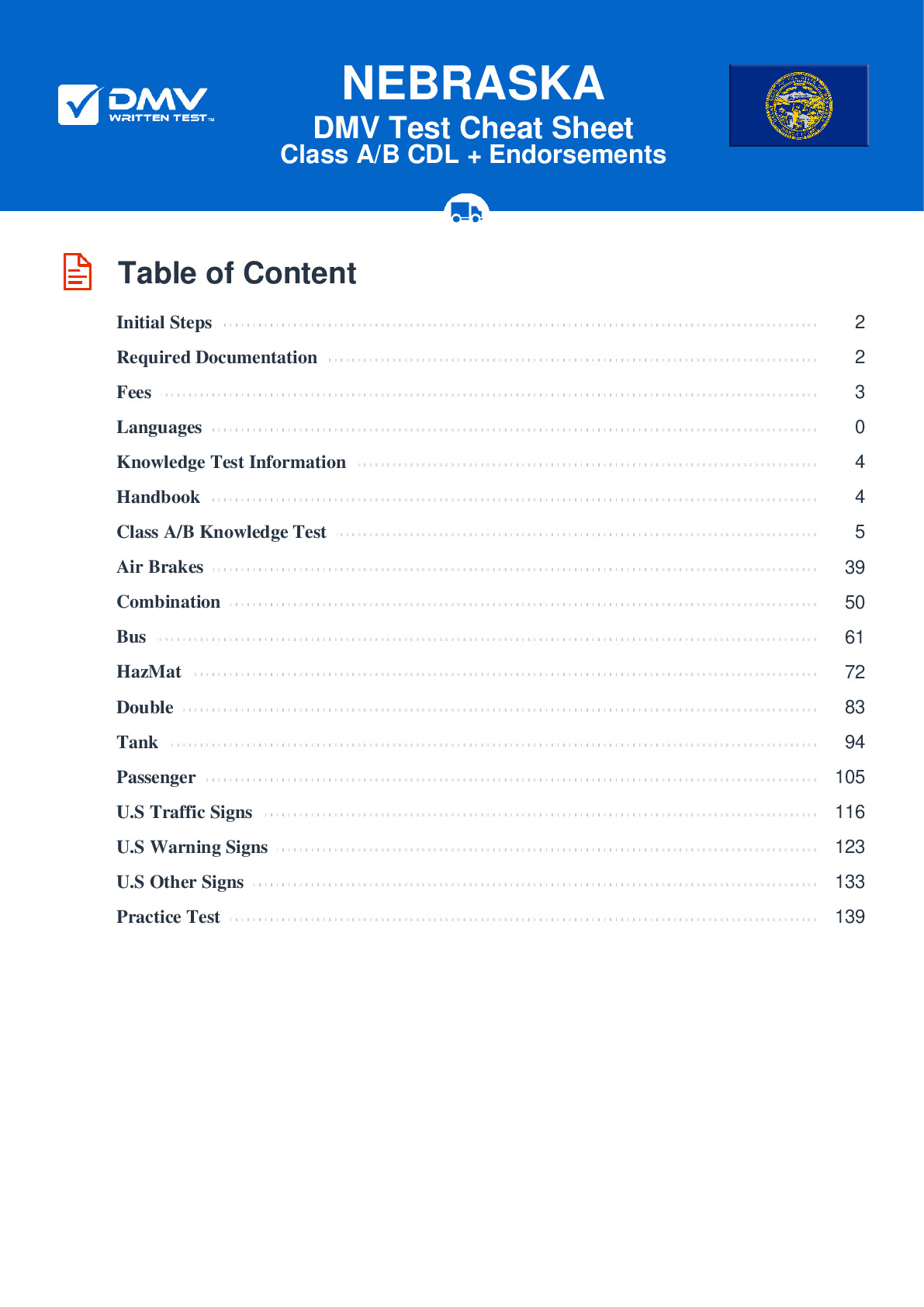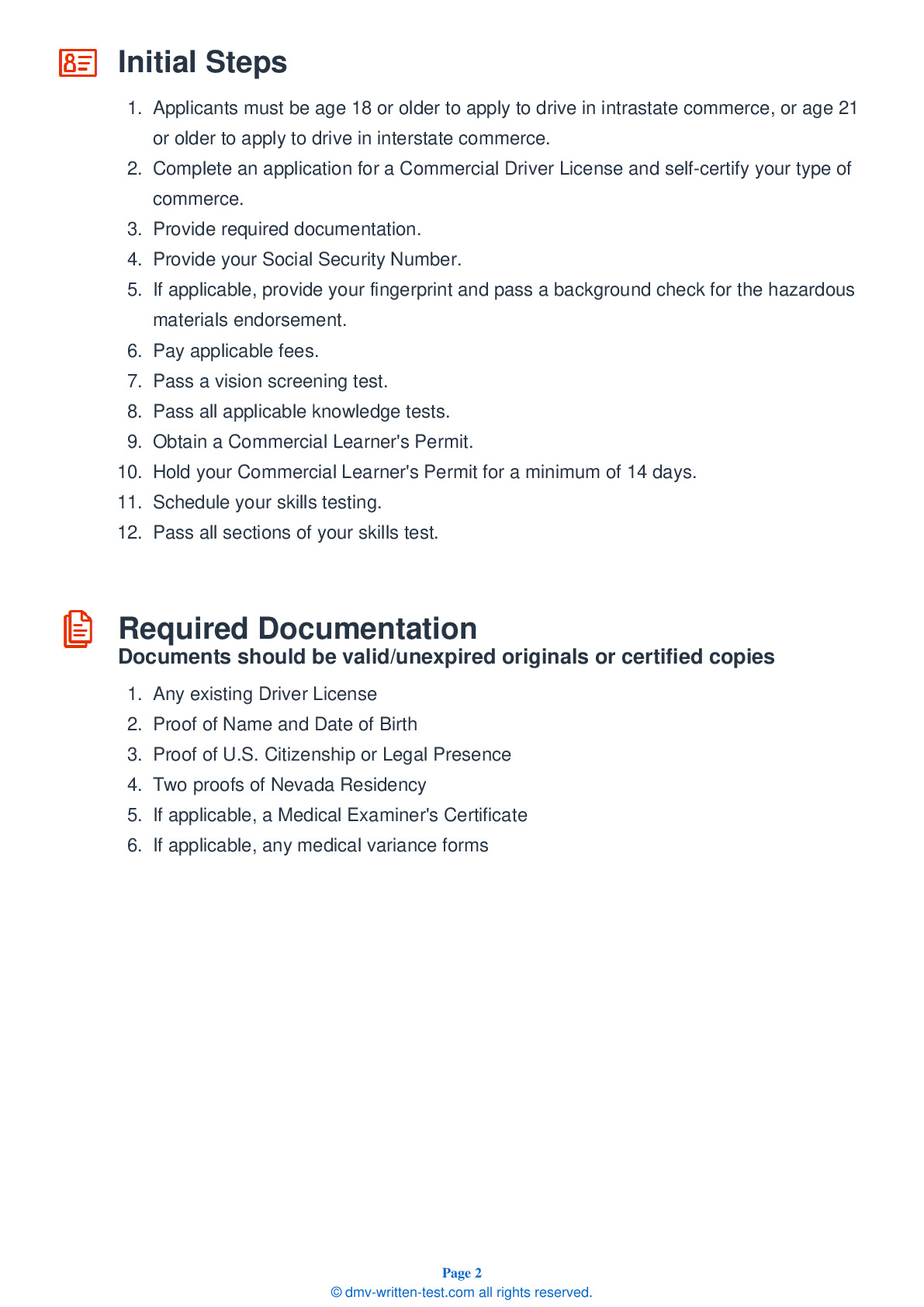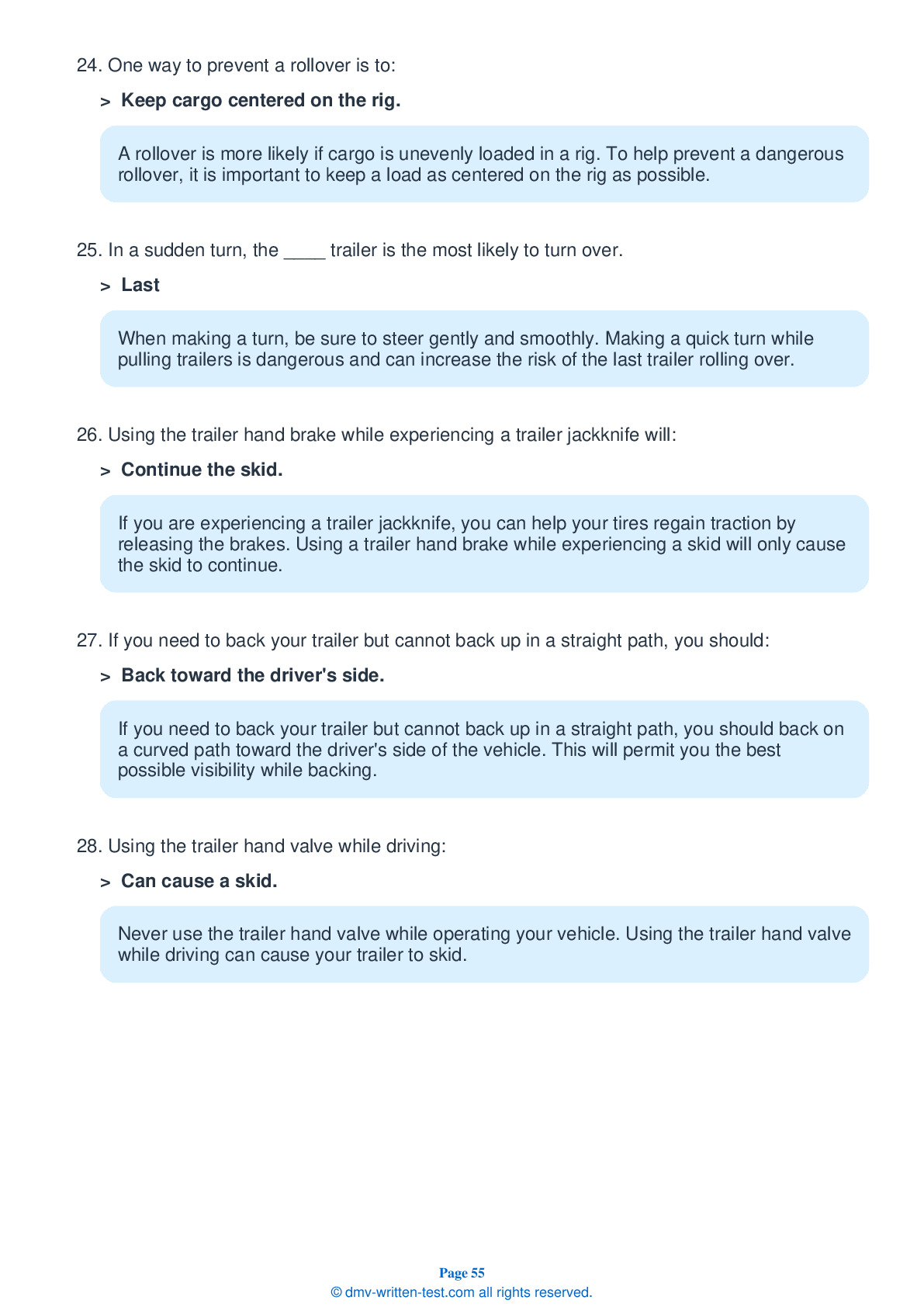Air Brakes
This endorsement is required for driving a vehicle with air brakes. To receive this endorsement, applicants must pass a written test. The test consists of 25 multiple choice questions. Each question has two, three or four answer choices. To pass, the applicant must answer at least 20 questions correctly. Test questions come from the Nebraska Commercial Driver License Manual. Questions come from the chapter covering: Air Brakes. The Air Brakes endorsement may be used with the Class A, B or C CDL.
Number of Question
Passing Score
13. If an air compressor is belt-driven, the belt should be routinely checked to ensure that it is:
Explanation
If your vehicle has air brakes, the air compressor drive belt should be checked before each drive. Check the tightness of the belt and verify that it is in good condition.
14. To use the stab braking method in an emergency situation, you should:
Explanation
The stab braking method for emergency stops involves fully applying the brakes until they lock up. The brakes are then released until the wheels start rolling, then the process is repeated.
15. The application pressure gauge:
Explanation
In an air brake system, the application pressure gauge shows how much air pressure is being applied to the brakes. Not all vehicles with an air brake system have this gauge.
16. If the spring brakes are on, you should:
Explanation
You should not apply the brake pedal if the spring brakes are activated. The brakes could be damaged if they are subjected to the force of air pressure and the springs at the same time.
17. If using air tanks with manually operated drains, how often should you drain the tanks?
Explanation
To prevent the build up of oil and water in a vehicle's air tanks, manually operated air tank drains should be used at the end of each day of driving.
18. On flat surfaces, wheel chocks:
Explanation




